When we first unboxed the Power Tower Dip Station Workout equipment Pull up Bar for Home Gym (yes,that mouthful of a name),it felt like inviting a compact home-gym workhorse into our space. Built from thickened heavy‑duty steel with noticeably wider square tubing, high‑density foam grips, and reinforced armrests, the tower immediately telegraphed durability – and with a claimed 450 lb load capacity, it looked ready for serious body‑weight work.
We spent our first session assembling and adjusting the unit, testing the 7‑gear height range (64.8″ to 92.3″) to see how it fit different users and ceiling heights. The unique “bend suction cups” at the base – designed to tweak the contact surface for better stability – proved to be an interesting touch that we’ll dig into more. Over a couple of weeks we ran through pull‑ups, chin‑ups, dips, leg and knee raises, and even push‑ups from the lower handles to get a feel for comfort, stability, and versatility.
in this review we’ll walk through our hands‑on experience with assembly, build quality, stability, comfort of the grips and armrests, workout variety, and whether the K Kingkang Power Tower delivers on the promise of a full‑body, space‑saving strength solution for home and office.
Our Overview of the Power Tower Dip Station for Home Gyms
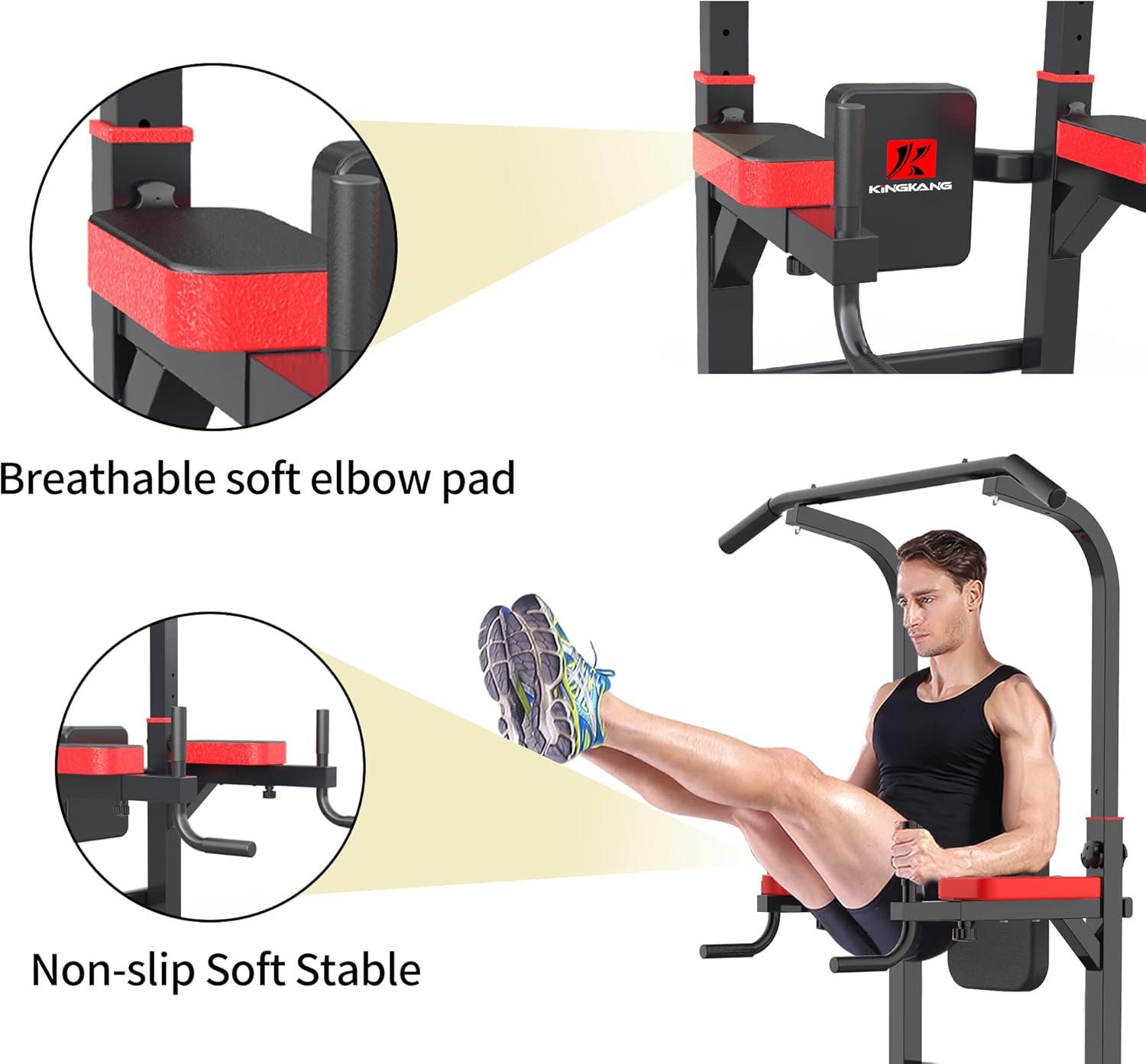
We appreciate how this unit turns a small footprint into a versatile training station - the 7-gear adjustable pull-up bar (from 64.8″ to 92.3″) lets us tailor height for different users and ceiling constraints, while the thickened steel frame and high-density foam grips feel reassuringly solid. Built components like antiskid screws, wider square tubing, armrests and the unique bend suction cups at the base contribute to standout stability, and the rated 450 lb capacity gives us confidence for heavier sets or added weight vests. Designed with input from professional coaches and backed by a manufacturer with two decades of experience, it’s clearly made for deliberate, progressive bodyweight training.
For practical programming we use it for a full-body circuit – pull-ups/chin-ups, dips, leg raises, push-ups and core work - and we easily scale intensity with bands or weighted gear. Below is a speedy spec snapshot and a short exercise list that captures its strengths:
| Spec | Quick Value |
|---|---|
| Height Range | 64.8″ – 92.3″ |
| Max Load | 450 lb |
| Build | Thick steel + foam grips |
- Pulling: pull-ups, chin-ups
- Pushing: dips, push-up variations
- Core: leg raises, knee raises
If you want to add this as the backbone of a home or office gym, explore current offers and purchase options here: Check Price & Buy Now
What We Noticed About the Build Quality Stability Load Capacity and Adjustable Height
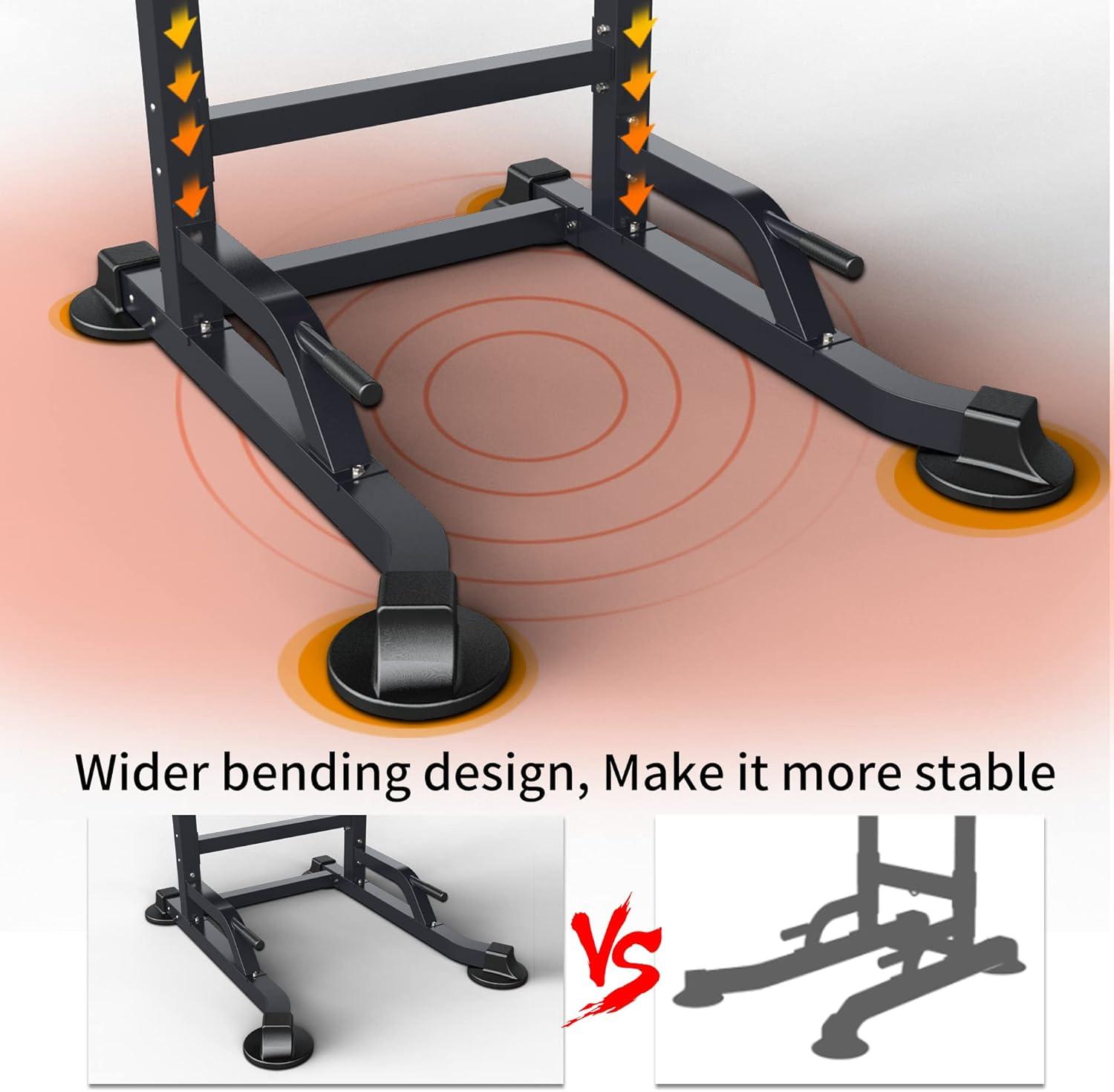
We found the build quality to be immediately reassuring: the frame uses thickened, heavy‑duty steel and the square tubing is noticeably wider than budget models, which gives the whole unit a denser, more solid feel.Key hardware and comfort features include:
- Frame: Thickened heavy‑duty steel for rigidity and longevity.
- Grips & Pads: High‑density foam rubber on handles and armrests for comfort during long sets.
- Fasteners: Antiskid screws and reinforced junctions that reduce wobble at connection points.
- Base adjustment: Bend suction cups at the feet let us tweak contact with uneven floors for better safety.
We also noted the manufacturer’s design input from professional coaches and two decades of experience, which shows in small but meaningful details that improve everyday use.
Stability and load capacity are standout points: the rig confidently supports up to 450 lbs, and the adjustable base plus suction‑cup tuning kept the tower steady during kipping and weighted variations. The pull‑up bar adjusts across seven settings from 64.8″ to 92.3″, making it easy for different users and ceiling heights to find a comfortable setup, and the platform accepts progressive overload-bands, vests or extra plates-to scale difficulty. Below is a quick spec snapshot we used to compare performance at home:
| Spec | What We Noticed |
|---|---|
| Max Load | 450 lbs – very reassuring |
| Height Range | 64.8″-92.3″ (7 steps) |
| Stability | Bend suction cups + wide base |
If you’re ready to try one for a serious home routine, grab yours here: see current price and buy now
Detailed Insights and Our Recommendations for Setup Use Exercises and Long Term Maintenance
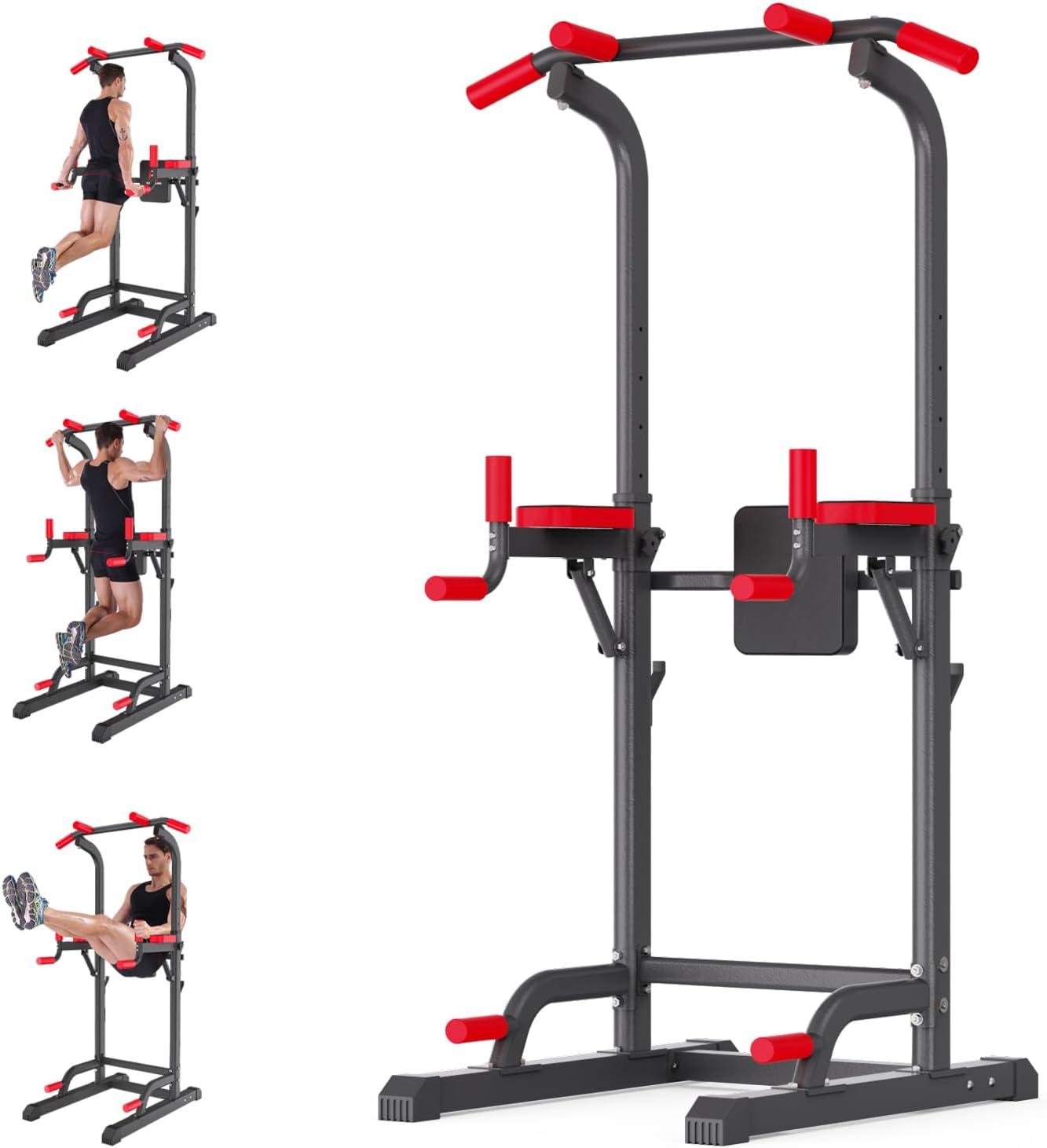
For setup we recommend taking a methodical approach so the tower feels rock-solid before you start higher‑intensity work. During assembly we tightened the antiskid screws and armrests to avoid any unwanted movement, adjusted the 7‑gear pull‑up bar from the low setting for beginners to the full 92.3″ reach for taller users, and used the unique bend suction cups to fine‑tune floor contact so the frame sits flush and stable. Our quick checklist below kept the process smooth:
- Assemble on a flat surface and confirm all bolts are snug.
- Set height for your first session (start lower to practice form).
- Adjust suction cups until the base has even contact with the floor.
- Perform a static load test (bodyweight hang and a few slow dips) before dynamic movements.
| Spec | Value |
|---|---|
| Height range | 64.8″ – 92.3″ |
| Max load | 450 lbs |
| Frame | Thickened steel |
| grips | High‑density foam |
Once it’s installed we use the tower for a balanced mix of pulling, pushing and core work – pull‑ups, chin‑ups, dips, leg raises, knee raises and push‑ups cover the entire body and scale easily with bands or weight vests. For programming: start with high‑quality reps (6-12) for strength and add core‑centric sets for hanging leg raises; progress by increasing reps, adding resistance, or adjusting tempo. For long‑term care,our maintenance routine keeps it safe and performing:
- Weekly: inspect and re‑tighten bolts,check antiskid screws and suction cups.
- Monthly: wipe down foam grips and frame, look for paint chips or rust and touch up if needed.
- As needed: replace worn grips or hardware and avoid dragging the base to protect both the unit and flooring.
Ready to set one up for your home routine? Get it on Amazon
Pros & Cons

After putting the Power Tower through several weeks of pull-ups, dips, and knee raises, we boiled our experience down to the essentials. Below is a quick snapshot followed by the details – what we loved, and what made us pause.
| Pros | Cons |
|---|---|
| Solid 450 lb capacity - feels very sturdy under heavy sets | Takes time to assemble; instructions could be clearer |
| Seven-height adjustments (64.8″-92.3″) – fits most rooms & users | Large footprint – needs floor space and adequate ceiling height |
| Comfortable grips and armrests for longer sets | Padding may compress over long-term heavy use |
| Bend suction cups improve on-floor stability | Not manny accessory/attachment options out of the box |
Why we liked it (Pros)
- Extraordinary load rating: The claimed 450 lb capacity gave us confidence during weighted pull-ups and heavier progressions – the tower felt solid and secure.
- Adjustable height: The 7-gear height range (64.8″-92.3″) easily accommodated our different users and ceiling setups,which made the tower versatile for home and office use.
- built for multiple moves: It handled pull-ups, chin-ups, dips, leg raises and push-ups without feeling like a compromise - a true all-in-one for bodyweight training.
- Comfort & grip: High-density foam grips and armrests kept our hands and forearms comfortable during higher reps and extended sets.
- Floor stability innovation: The bend suction cups are a thoughtful touch – we noticed improved contact on imperfect floors which reduced wobble more than standard feet.
What held us back (Cons)
- Assembly effort: It’s a heavy steel frame with many parts – expect a 60-90 minute build and a second pair of hands. The manual could be clearer in places.
- Space & ceiling requirements: The tower needs a generous floor footprint and headroom at taller settings. Measure before you buy – it’s not ideal for cramped rooms or low ceilings.
- Padding longevity: The foam armrests and grips are comfortable, but we’d keep an eye on long-term compression and seam wear if the tower is used daily by multiple people.
- Limited extras: There aren’t many included attachments (no pull-up assist bands, dip bars beyond the built-in ones), so you may want to buy accessories separately.
- Mobility: It’s built to be stable, not portable - moving the tower requires effort and two people.
| Quick Specs | Why it matters |
|---|---|
| Load: 450 lbs | Safe for weighted progressions |
| height: 64.8″-92.3″ | Fits most users & ceilings |
| Best for | Bodyweight strength training |
We found the Power Tower to be a durable,versatile piece of home-gym equipment that helped us build muscle without leaving the house. If you have the space and patience for assembly, it’s a solid foundation for bodyweight training – just be mindful of long-term wear on padding and the need for extra accessories if you want to expand your setup.
Q&A
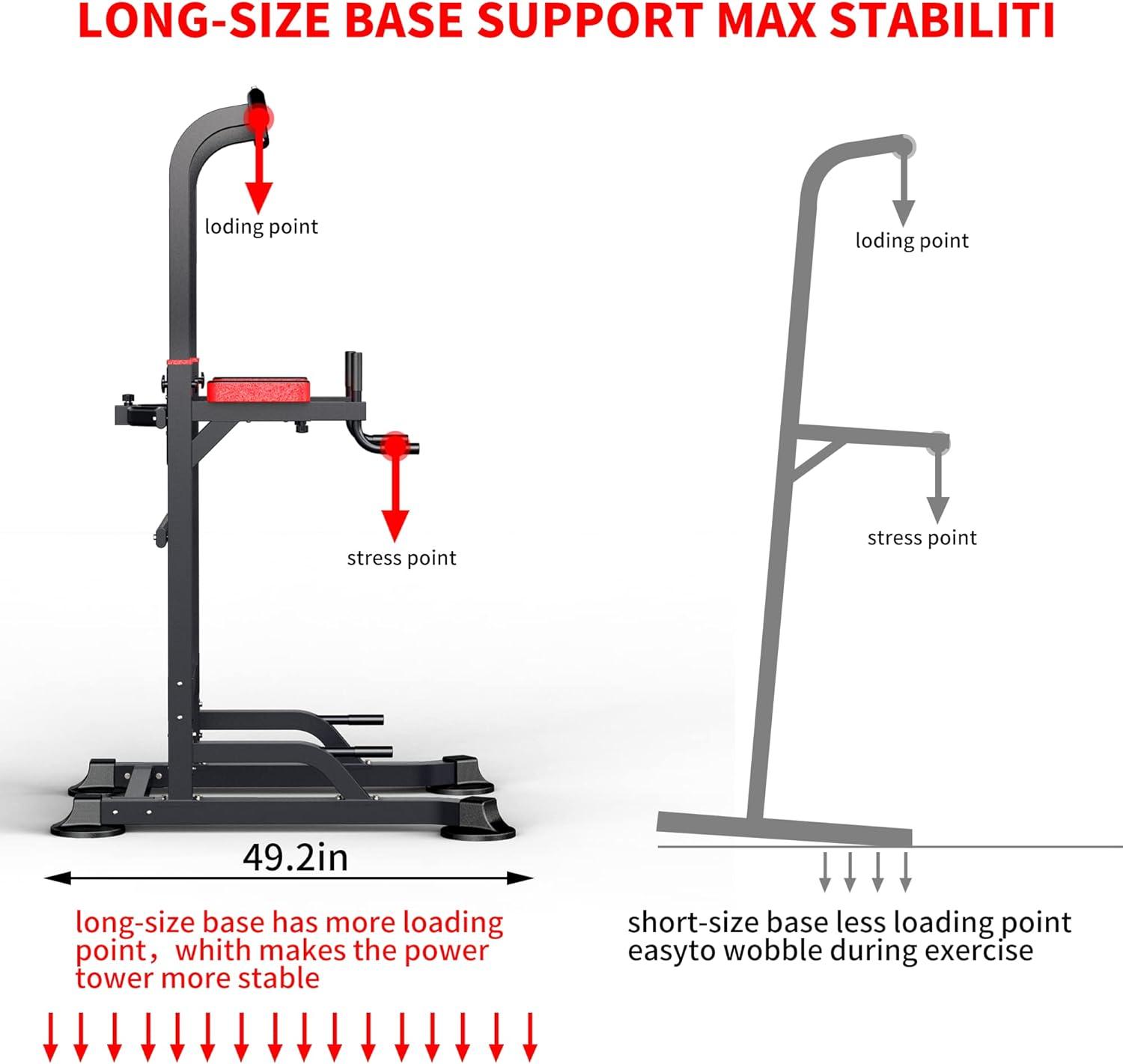
Q: What exactly is a Power Tower workout?
A: A Power Tower workout uses your body weight to build lean muscle through pulling, pushing and core moves. On this unit we did pull-ups, chin-ups, dips, leg and knee raises, and push‑ups – all from the same frame. You can make exercises easier or harder with bands, weight vests or plates, so the tower grows with your progress.
Q: What exercises can we do on this power tower?
A: The basics are covered: pull-ups and chin-ups, dips, vertical leg raises and knee raises, and incline or elevated push‑ups. Those moves let us hit back, chest, arms and core without swapping machines.
Q: How much weight can it hold?
A: The manufacturer rates the tower to 450 lbs. That capacity gives us confidence for heavier users and for adding weighted vests or dip belts, but we still recommend staying well under the limit and following proper form.
Q: Is it suitable for tall people?
A: The pull‑up bar adjusts from 64.8″ to 92.3″, so it suits most adults and taller users. We found the seven‑gear height range helpful for dialing in bar height for full range of motion.
Q: How sturdy and durable is the build?
A: The tower uses thickened heavy‑duty steel, wide square tubing, high‑density foam grips, antiskid screws and padded armrests. Combined with the 450 lb rating and our hands‑on use, it feels robust and solidly built.
Q: What are the ”bend suction cups” and do they work?
A: The base has unique adjustable (bend) suction cups that let you alter how the base contacts the floor, improving surface contact and stability. In our experience they add an extra margin of steadiness – especially on slightly uneven floors – but we still recommend a flat, hard surface and checking the feet before each session.
Q: How hard is it to assemble?
A: Assembly requires some basic tools and two people is ideal for safety and alignment. Fasteners and hardware are included; follow the manual and tighten connections as you go. We assembled ours without specialty tools but expect 45-90 minutes depending on experience.
Q: Where should we put it, and how much space does it need?
A: Place it on a flat, level floor with several feet clear in front and behind for full pull‑ups and dips. We also put a rubber mat underneath to protect flooring and reduce slippage. As it’s a heavy steel unit, it’s best as a semi‑permanent piece – not something you’ll move every day.
Q: Is this good for beginners and advanced users?
A: Yes. Beginners can start with assisted reps,negative pull‑ups or band support,while advanced users can add weight vests,belts or slow eccentrics. The versatility is one of the tower’s strengths: one frame supports progress from day one through heavy loading.
Q: Any safety tips we should follow?
A: Always inspect bolts, grips and feet before use, assemble on a flat surface, don’t exceed the 450 lb limit, and supervise minors. Keep hands dry, use proper technique, and if you add weighted gear, increase load gradually.
Q: How do we maintain it?
A: Wipe down foam grips and pads after sweaty sessions, check and re‑tighten bolts monthly, and keep the suction cup feet clean for best contact.Store indoors and avoid exposing the frame to rust-causing moisture.
Q: Who makes this and can we expect support?
A: The product is from K Kingkang, a manufacturer with over 20 years of fitness equipment experience. They developed this tower with advice from professional coaches. For warranty specifics, replacement parts or after‑sales support, check the seller listing or contact K Kingkang directly.
Q: Final verdict in one line?
A: For us,this power tower is a versatile,heavy‑duty home solution that lets you build a full‑body routine on one frame – just assemble carefully,place it on a stable floor,and progress sensibly.
Unleash Your True Potential
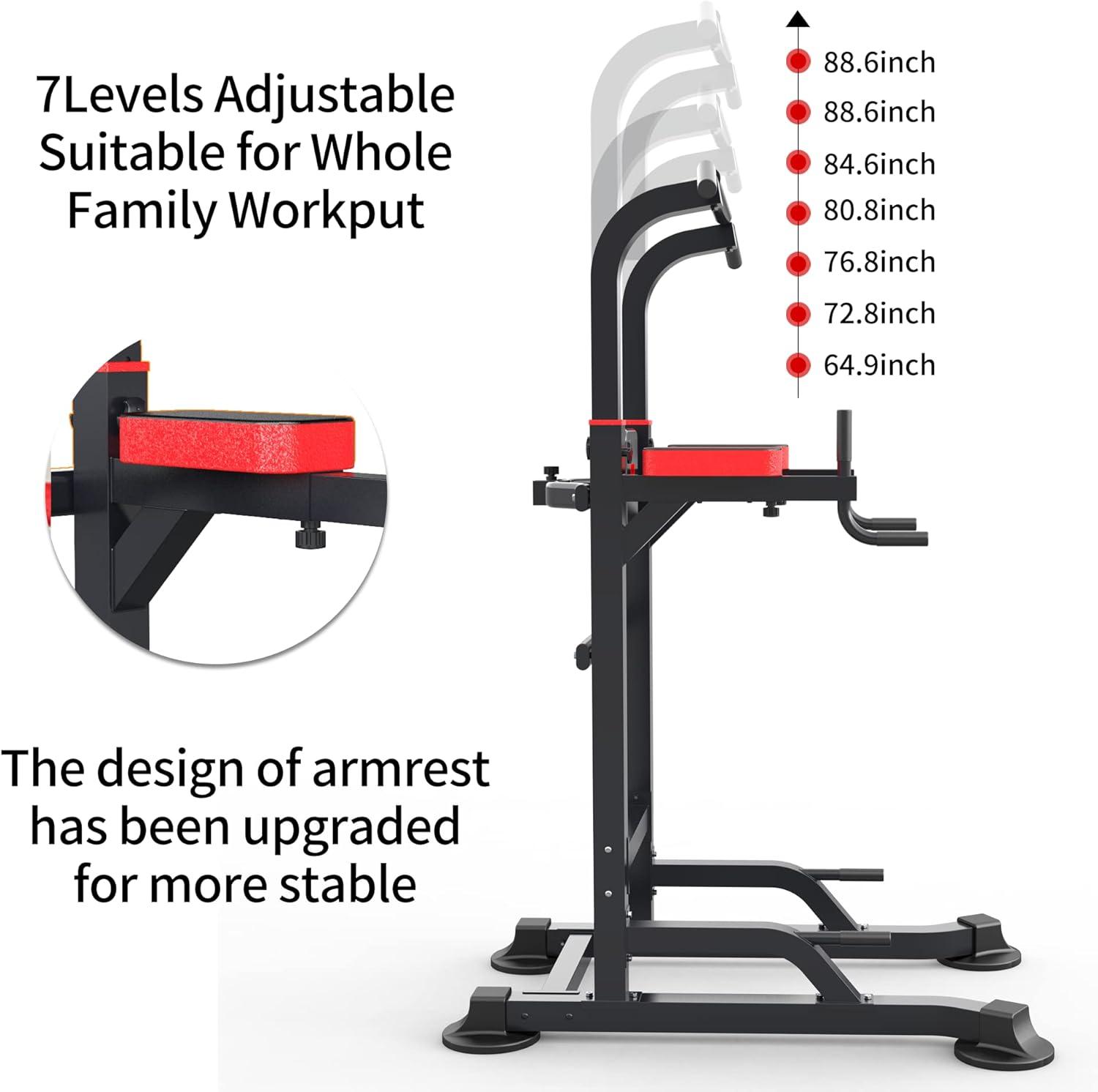
We set out to see if a single piece of equipment could replace trips to the gym – and after weeks of pull-ups, dips, knee raises and loaded push-ups on the Power Tower, the answer was clear: it can. The adjustable 64.8″-92.3″ pull-up bar made it easy for everyone in our group to find a comfortable setup,the thick steel frame and 450 lb capacity gave us confidence during heavier progressions,and the foam grips and bend suction cups kept the hard work feeling secure. We liked how one station let us target back, chest, arms and core without hauling around a stack of machines.This isn’t magic – results came from consistent sessions and sensible progression – but the Power Tower proved to be a versatile, solid foundation for a home strength routine.If you want compact, multi-angle bodyweight training that scales with added bands or vests and stands up to regular use, this is a practical option.
ready to build your own at-home routine? explore the Power Tower and current details here:
See the Power Tower on Amazon
Have questions about how we programmed sets or adapted moves for different skill levels? Drop a comment and we’ll share the workouts that helped us grow.
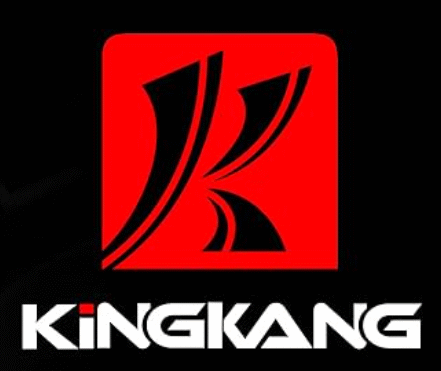
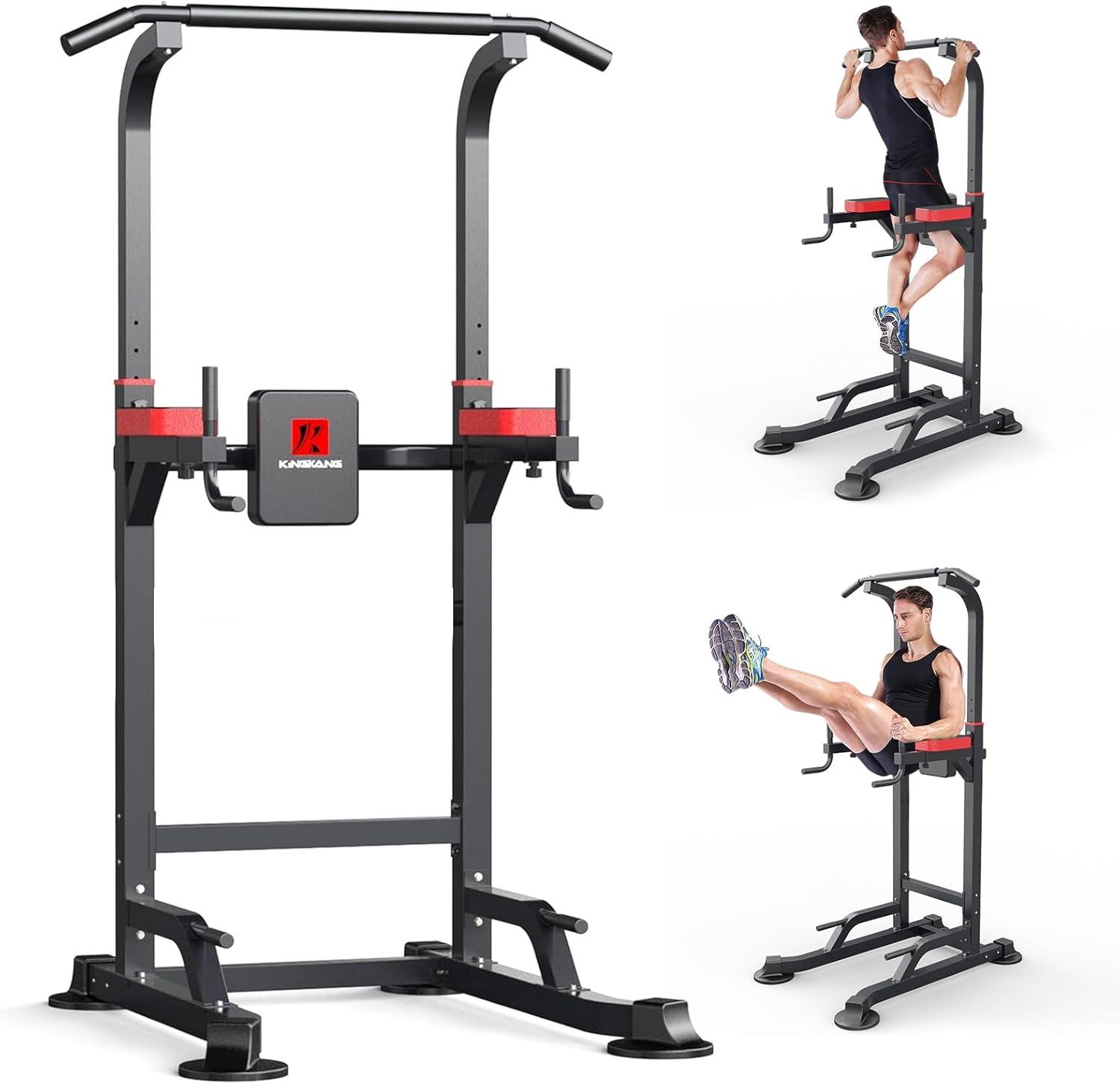
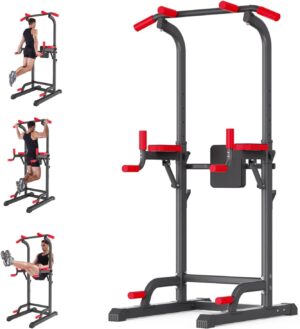
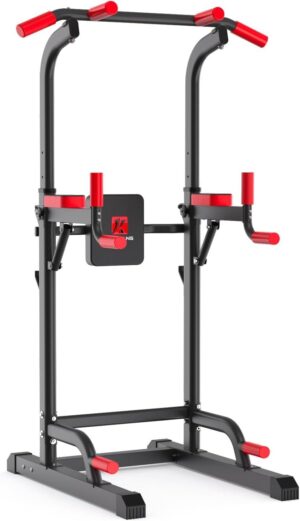

Reviews
There are no reviews yet.